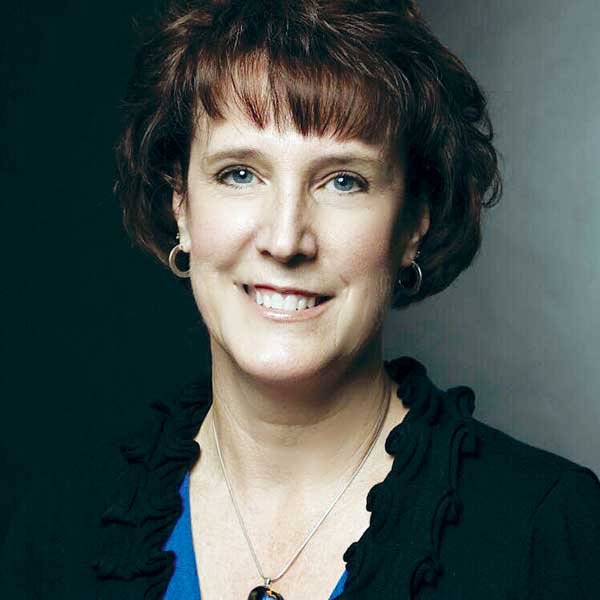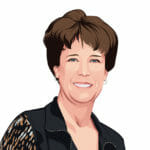
A friend of mine is a rancher. We were talking the other day about our current challenges. He asked me if I had ever had the experience of moving a large (200-plus) bunch of yearlings.
While I have moved cattle from winter to summer land, I have not moved yearlings. A yearling, for those who do not know, is usually an animal — sheep, cow or horse — that is a year old or starting into the second year of life.
My friend, reflecting on how to move yearlings, went on to share that when you move that many yearlings, and you have limited resources (horse/women/men ratios) with wide open spaces, it makes for a challenge, to say the least. Yearlings, unlike cattle, tend to be fast, rebellious, sometimes unpredictable … generally obnoxious.
Trying to drive them as you would cattle is a recipe for disaster. With yearlings, someone needs to lead. Best lead is someone who can do a soft bawl like the sound a yearling’s mother would make. The lead must be a recognizable voice, a calm and steady voice. When the yearlings begin to slow or lose interest, the instincts of the drivers is to slow or turn back to them. Those instincts are wrong. It is much more effective to pick up the pace. It recaptures attention, engagement.
Those on the sides that are guiding the yearlings, must also be aware of their actions. Too much pressure will cause the yearlings to blow by the rider in the front or the one in the back. Other yearlings will follow the rebels. It is not fun to turn the yearlings around once they start following the rebel(s).
The drag … the rider in the rear encourages the stragglers. Watch for the super rebels — they are the ones that need to hear the lead voice the most. They bolt fast and are the first to lose interest in what is happening. They need to hear the calm, steady voice of the individual on the lead horse.
I found myself wondering if we see the same need for leadership and behaviors in our care settings? Of course we all want to be the front leader, in front with a calm and steady voice. Reassuring and guiding. Moving forward with a consistent and recognizable message.
Many of us subconsciously are performing the role of the drag, picking up the stragglers and pushing everyone forward. We label these actions or individuals as those who are encouraging. Not always in the front but still vital for moving forward.
How many of us would be comfortable being one of the sides pushing, but careful to not push too hard as to bring on rebellious obnoxious behavior? Picking up the pace when we notice slowing or disinterest in the call of the lead. We know engagement is critical. It’s important watching the lead and drag to assure that there is alignment.
Of course none of us are the yearlings, right? Rebellious, moving fast, full of ourselves, unpredictable in our behaviors, maybe even obnoxious. Yet if we were honest, we all have been a yearling in our behaviors and actions.
In reflecting on this analogy, it became clear to me that our teams might be the yearlings. Ready to bolt at the slightest change. Do you have the lead identified who provides that calm, consistent voice leading the way? Do you have the drag identified who picks up the stragglers? Who are your encouragers, pushing the team forward, watching for disengagement? Pushing the lead to pick up the pace? Roles have to change to navigate this new terrain. There is opportunity to learn from generations of leaders who ride horses.
My grandfather was one of those leaders. I remember him telling me about the code of the range, or the Code of the Cowboy.
Code of the Cowboy
1. Live Each Day With Courage
2. Take Pride In Your Work
3. Always Finish What You Start
4. Do What Has To be Done
5. Be Tough, Be Fair
6. When You Make A Promise, Keep It
7. Ride For The Brand
8. Talk Less And Say More
9. Remember That Some Things Aren’t For Sale
10. Know Where To Draw The Line
The wisdom in the code rings true today as it did in his time and before. Lean into the wisdom and use it to meet the challenges you are facing. Think about your yearlings, your drag, your sides and your lead. They are critical in moving forward and avoiding heading back to the barn.
Martie L. Moore, MAOM, RN, CPHQ, has been an executive healthcare leader for more than 20 years. She has served on advisory boards for the National Pressure Ulcer Advisory Panel and the American Nurses Association, and she currently serves on the Dean’s Advisory Board at the University of Central Florida College of Nursing. She recently was honored by Saint’s Martin’s University with an honorary doctorate degree for her service and accomplishments in advancing healthcare.





